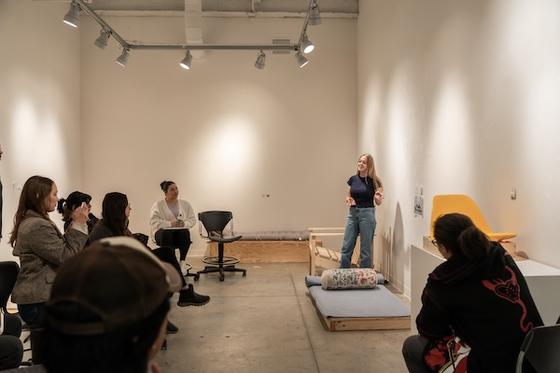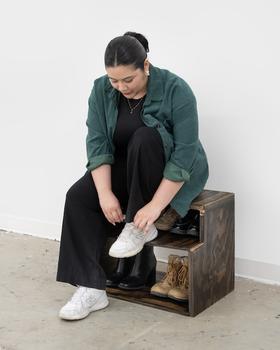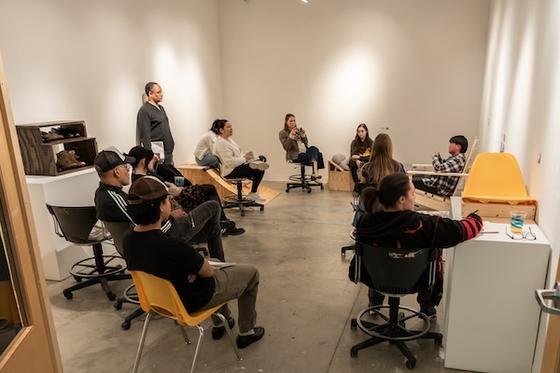“Furniture isn’t just a tangible item that’s supposed to mold to your body, but it can also mold to your lifestyle,” said Katherin Salazar, a George Mason University senior art and visual technology major.
She is currently taking a new College of Visual and Performing Arts special topics course, AVT 496, which focuses on furniture design and is offered through the university’s School of Art.

“The goal is to teach students about the power of furniture and how the built environment is constantly communicating and reorchestrating hierarchical structures,” said Mallory Kimmel, a Washington, D.C.-based interdisciplinary artist who created and teaches the course.
“We’re learning how to cultivate a greater awareness of the intended power dynamics in space, and also to become a curator of reshaping hierarchies in space to be more oriented to social justice ethos,” she said.
Salazar, who has contracts with Smithsonian Folklife Festival and Skate Folk creating competitive atmospheres that serve as a gateway for local skaters, is currently building a quarter pipe ramp for a class project.

“The techniques we’re learning in this course go hand in hand with building a lot of structures related to skating,” said Salazar, who works as a student monitor in the university’s Sculpture Studio under the supervision of Ben Ashworth, sculpture and foundations supervisor in George Mason’s School of Art.
“Mallory and Ben have taught me the ways of the art world and how it's constantly changing and growing. The biggest lesson I’ve learned so far is to take pride in my skills and realizing the worth of them,” she said.
As a part of the course, the students will tour the National Gallery of Art and put what they’ve learned to practice by identifying and recommending ways to create a more welcoming environment for people to experience the art.
The students will also present how their finished sculptures address hostile architecture, which Kimmel defines as the “built environment containing features that aim to reject certain people or behaviors.”
An example of hostile architecture is public benches that have handrails in the center so that it's prohibitive for the houseless population to lay down, explained Kimmel.

“[This course] has allowed me to expand my thinking beyond just the functions of furniture, but about its design ethics and the body itself,” said Roland Payabyab, a senior art and visual technology major.
For Payabyab’s first project, he focused on posture in honor of his parents.
“I'm noticing as they age, they're developing a lot of back problems, so I'm creating a bench meant to relieve some of that pain by incorporating a function within this piece to move with them as they need, for example, when they’re bending over to put on shoes,” he said.
Payabyab was able to build his project with techniques, such as woodworking and joinery.

“Joinery was one of the things I was most excited to learn about, and it just so happened to be the first topic we would cover,” said Payabyab. “Now I know how to combine different materials without nails or screws to build my sculptures, which is great for me because that’s what I’d like to do as a career after I graduate.”
In This Story
Related News
- September 26, 2025
- April 2, 2025
- February 19, 2025
- December 4, 2024
- July 1, 2024
